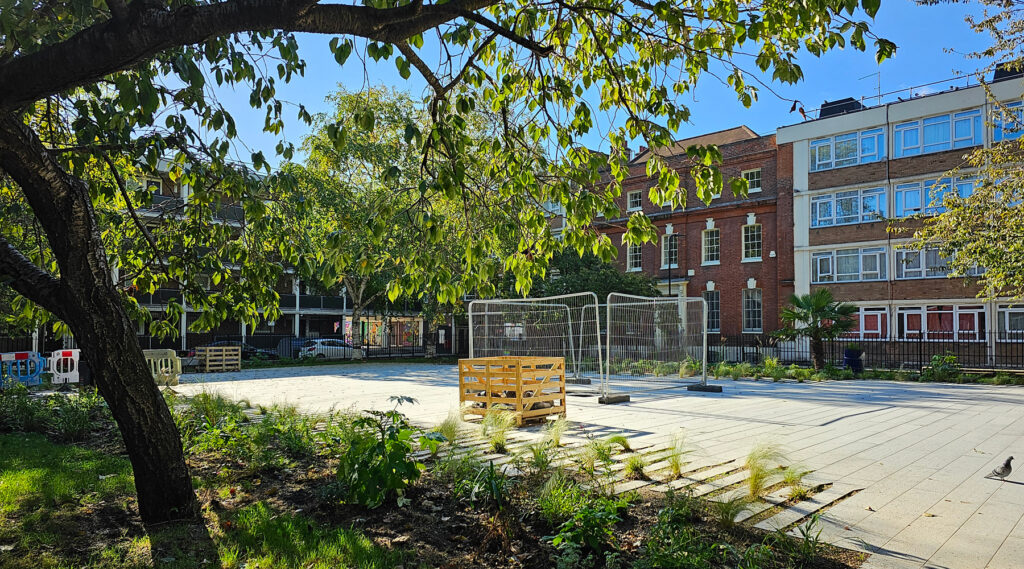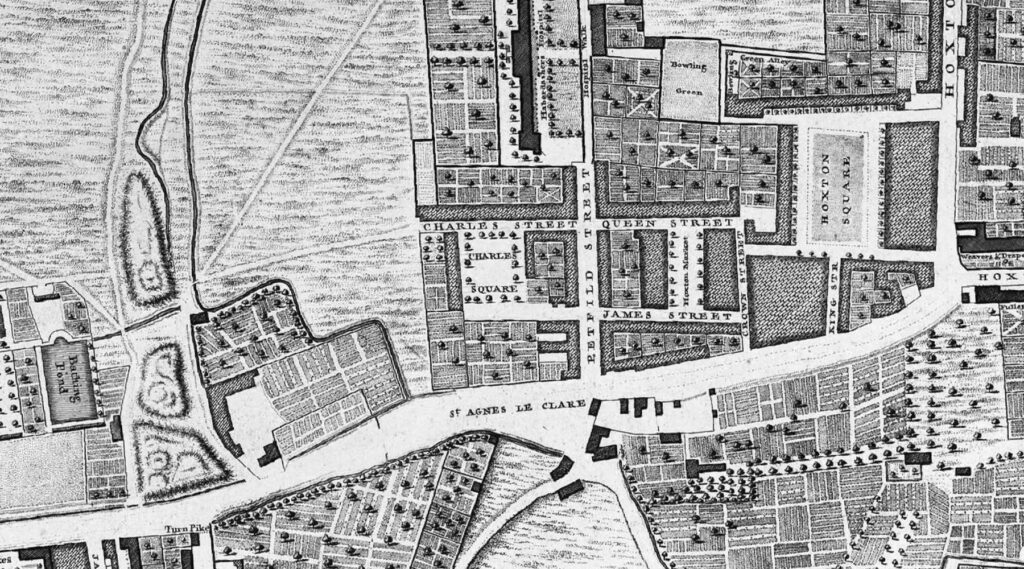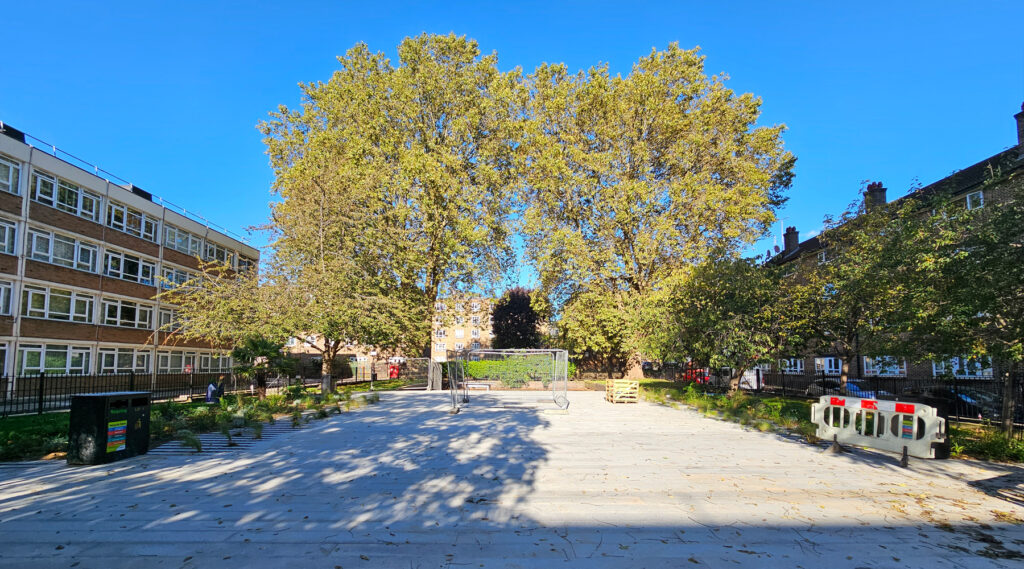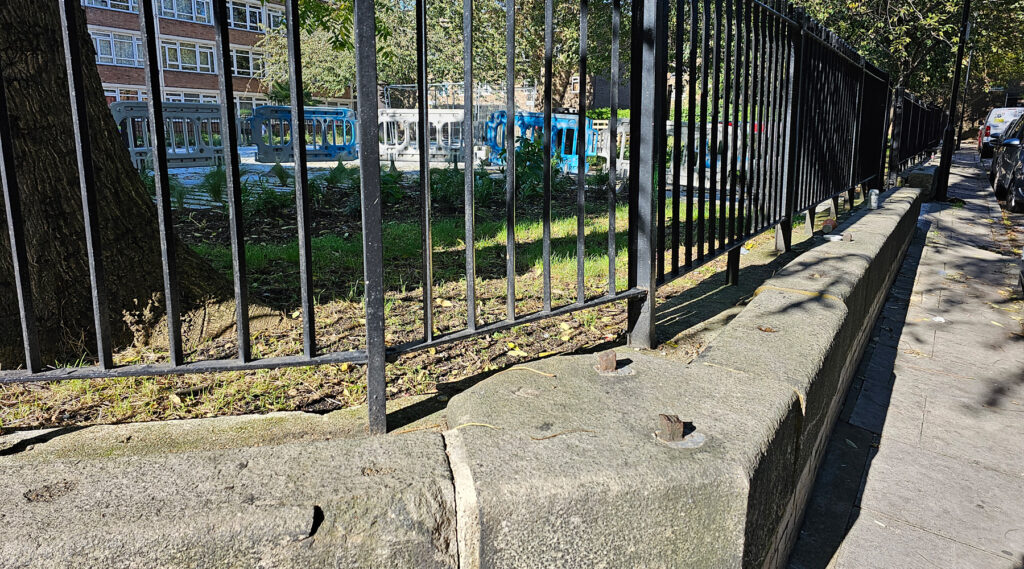This is a pocket park in Shoreditch a short distance from its more famous cousin in Hoxton, that looks like it might be a post-war clearance site, but is actually about 300 years old.
It looks suspiciously like war clearance because it’s surrounded by a lot of post-war blocks of flats, and typically that suggests clearance of slums for flats surrounding a new park.
In fact, Charles Square is a historic garden square that was laid out in the 1740s for soon-to-arrive housing, completed in 1770, and is named after King Charles II. It was described as ‘set with greens, plants, fruit and other trees’ when it opened.
However, none of the original features or surrounding buildings remain except for one building.
This is because, during the 20th century, the houses surrounding the garden square were extensively changed, with many houses chopped up into flats or replaced entirely. What little was left of the original was then destroyed during WWII.
The one survivor of the original is 16 Charles Square, and that was built as the Shoreditch County Court, which is probably why it survived, as it wasn’t a house to be chopped up for rentals.
One of the disappointing aspects of the replacement blocks of flats is that most of them don’t face the park. Although inside the flats, the living rooms all overlook the park, the front doors are on the other side of the buildings. From the park side though, with the lack of doors and entrances, it feels as if the residents have turned their backs on the park.
That’s the architect’s fault though.
The pocket park is split into two main zones, with about a third as a sunken space containing a table tennis table in the middle.
However, the bulk of the park has recently been refurbished.
What had been a somewhat bland space, with paving in the centre surrounded by a lawn and some raised planting beds, has been replaced with new lighter paving that seems to brighten the space. The old plain lawns are now filled with bedding plants, replacing the old raised bedding pots that used to be in the middle.
An interesting idea is to cut slices into the paving to allow tall grasses to be planted and over time, they should form intrusions into the paving that children will be able to run through without leaving the paved areas.
It hadn’t arrived when I visited, but a new “landmark tree” is due to be planted in the centre of the newly repaved space. The sunken area hasn’t changed, as there’s no funding for that at the moment, but the intention is to put an outdoor gym there eventually.
A bit of heritage to look for can be seen in the stone wall surrounding the pocket park, where you’ll see echoes of the iron railings that were added to the park in 1897. Removed, as so many were, during WWII for their metal, they were replaced with the current railings in the 1960s.













Leave a Reply